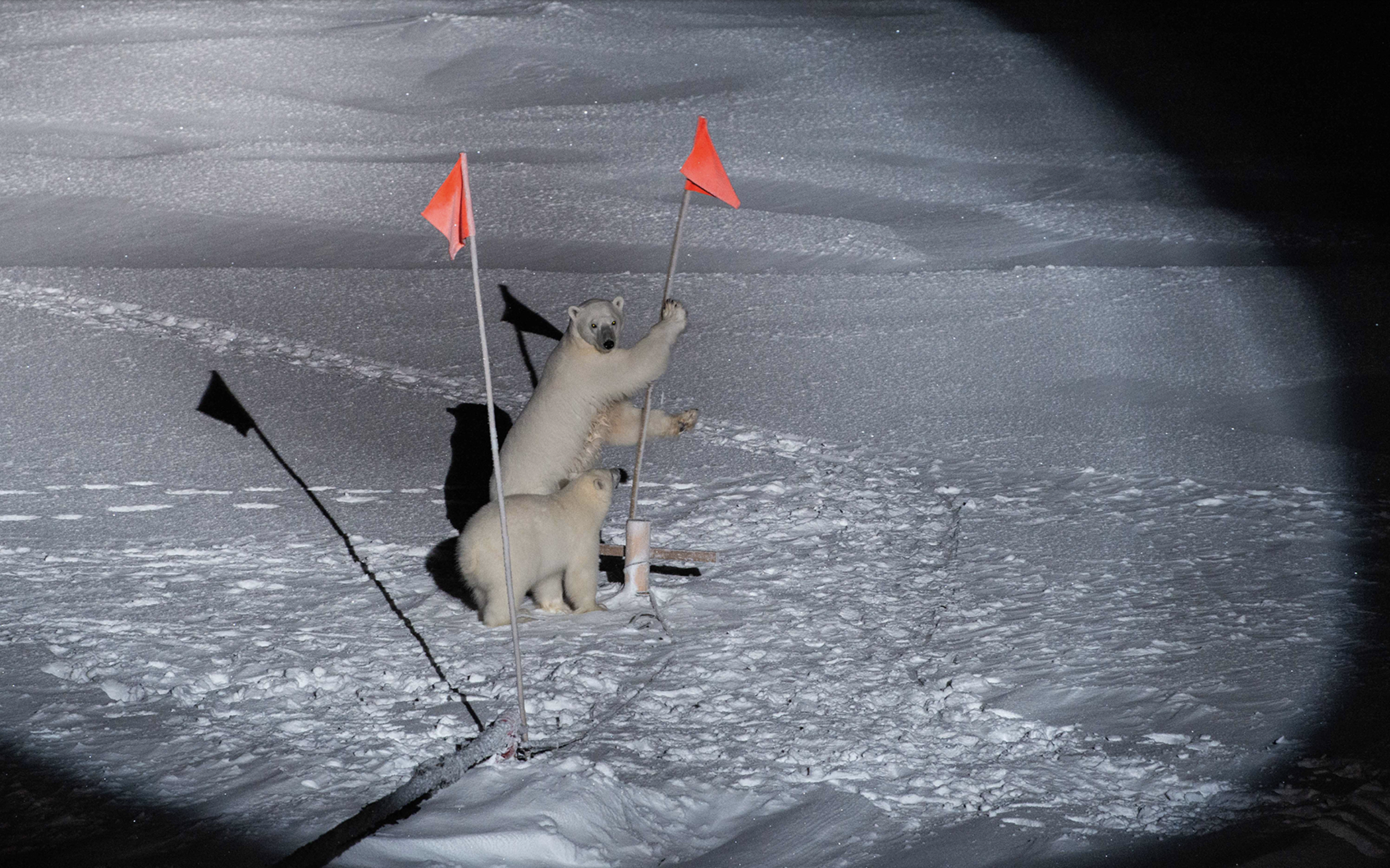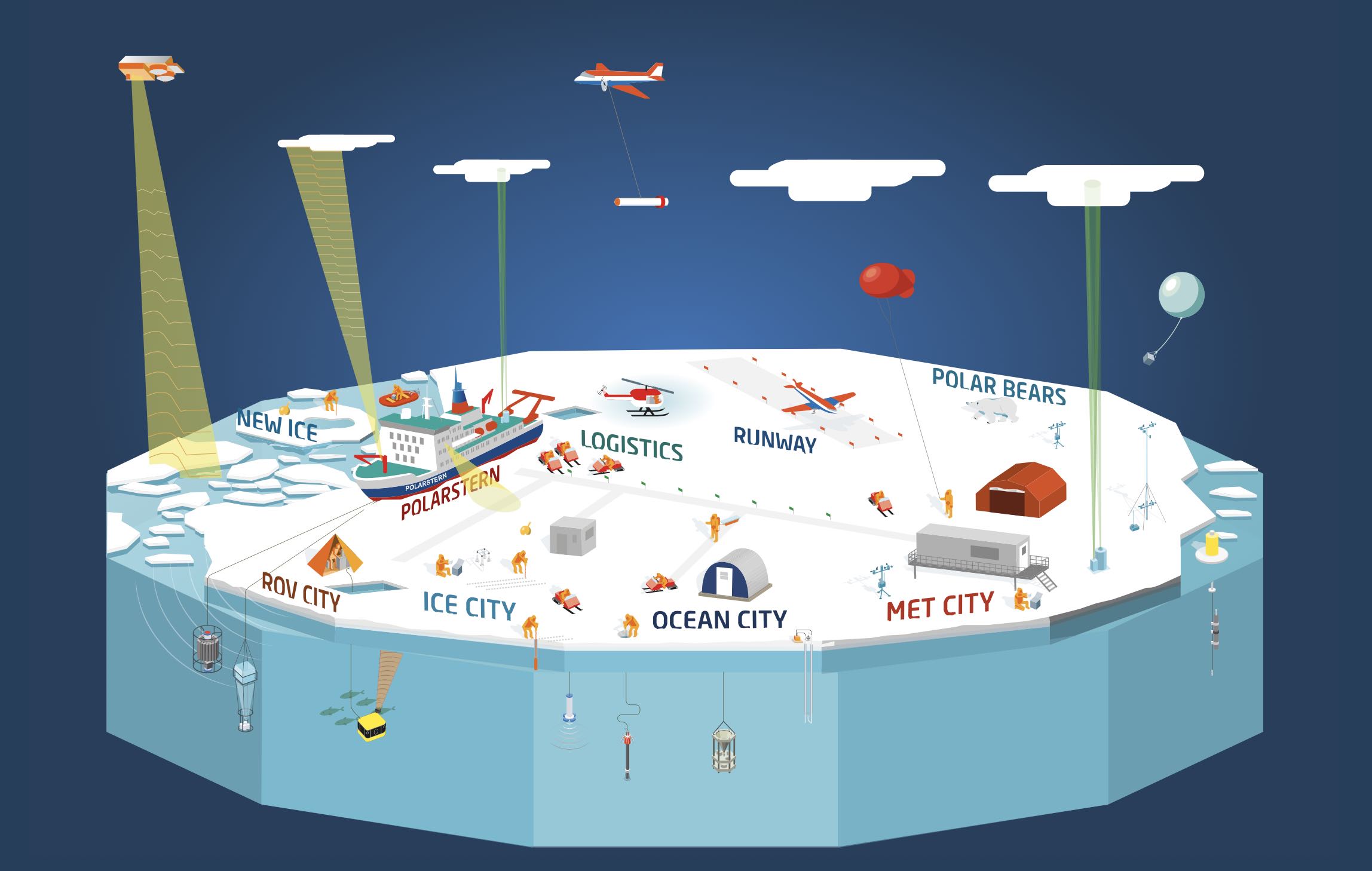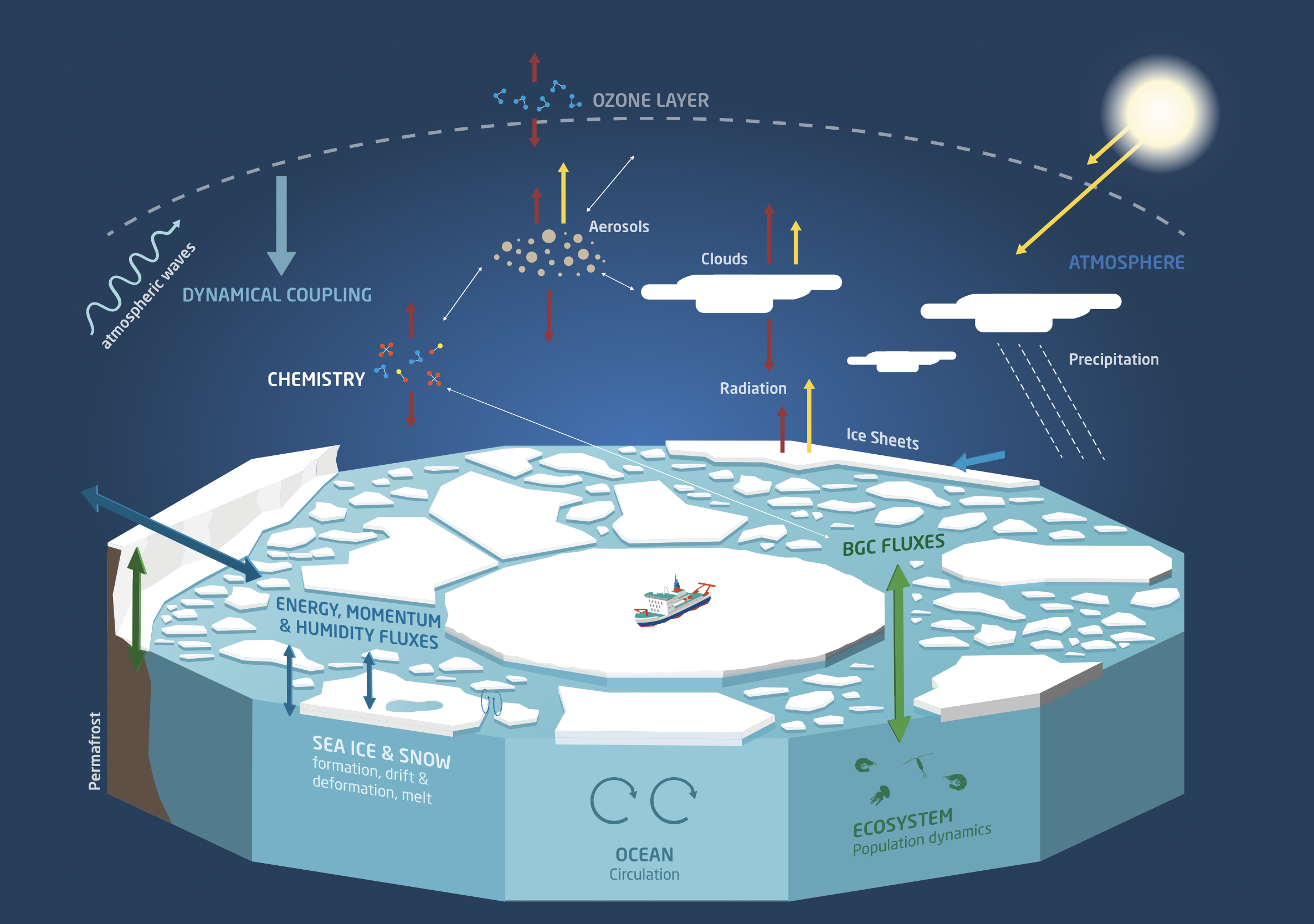A Look Back at MOSAiC Monday
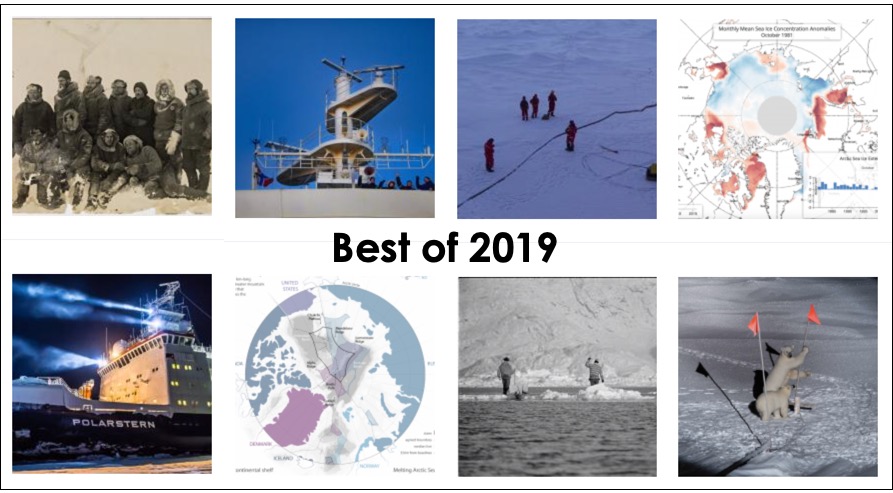
The MOSAiC expedition has been going on now for 101 days! To celebrate all that has been accomplished since September of 2019 and ring in the New Year, this week we're bringing you our favorite bits from past MOSAiC Mondays. Scroll all the way to the bottom to see what's in store for 2020!
What's your favorite part about MOSAiC Monday? Send us your feedback!
 MOSAiC Monday - October 21, 2019
MOSAiC Monday - October 21, 2019
 #askmosaic: Polar Bears at the Polarstern
#askmosaic: Polar Bears at the Polarstern
Submitted question: Do you think you will come across wildlife?
Great question! Here is one experience with Arctic wildlife that folks on the Polarstern had last week:
Yesterday evening again two polar bears came close to our ship...Nobody was on the ice when the bears appeared and there was no danger for the expedition's participants. For our own safety and for the safety of the polar bears, we don't want them to get used to being our neighbors. The expedition's lead and professional polar bear guards therefore chased them with the flashbang of a flare gun. The bears were not injured and left the area immediately. Photo: Esther Horvath, AWI
Watch an interview with Trude Hohle, a polar bear guard on the Polarstern
Submit your question!
 MOSAiC Monday - October 7, 2019
MOSAiC Monday - October 7, 2019
Icebreaking News: The MOSAiC expedition has found its floe
After only a few days of searching by helicopter, icebreaker, satellite, and on foot, the MOSAiC expedition has officially found a suitable ice floe in the Arctic to freeze into and drift along with for the next year. One of the most important milestones of the expedition has been achieved!
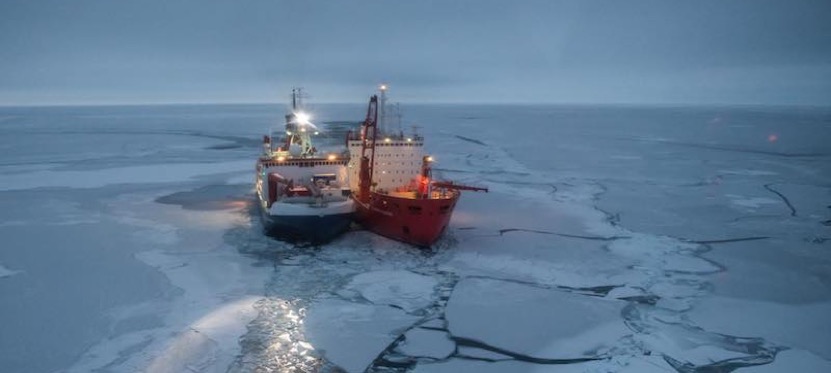
The Polarstern docks with the Akademik Fedorov. As the Polarstern becomes frozen in the ice, the Fedorov will deploy research stations on the ice around it, some as far as 50 km away.
Photo: Esther Horvath, AWI
Read more
 MOSAiC Monday - October 14, 2019
MOSAiC Monday - October 14, 2019
A Literal Mosaic of Science
Building Cities on the Ice
Now that the Polarstern has docked with the ice floe it will become frozen in, scientists are getting to work. But this doesn't just mean taking measurements from the deck of the ship. Rather, an entire scientific community will be erected around the Polarstern, complete with multiple science 'cities' where scientists will keep instruments and collect data, a runway where DC 3 polar aircraft will take off and land, and trip wires for detecting polar bears! In addition to the cities on the ice, drones packed with scientific instruments will fly above the ice to gather information about the atmosphere, and remotely operated vehicles (ROVs) will be deployed beneath the ice to explore the mysterious polar ocean world below. Image credit: AWI
Read more: Science cities
MOSAiC science overview
 MOSAiC Monday - November 18, 2019
MOSAiC Monday - November 18, 2019
 Climate Change Impacts on Indigenous Ways of Life
Climate Change Impacts on Indigenous Ways of Life
Indigenous peoples have over centuries adapted to living in the harsh and rugged Arctic. As a result, indigenous peoples have an intimate familiarity with their environment. In recent decades, Arctic indigenous communities have begun to notice and experience changes in their environment that are having significant impacts on their ways of life.
Divide students into pairs. One student will read about Arctic indigenous peoples' ways of life (link to reading). Their partner will read about environmental changes happening in the Arctic. After completing their independent readings, each pair should share what they read with each other. Their task is to combine the information they each learned to brainstorm ways in which environmental changes happening in the Arctic could affect or change indigenous ways of life. Challenge students to come up with at least three different ideas using what they read to support their claims. Then, discuss as a class.
Readings: Arctic indigenous peoples' ways of life and environmental changes happening in the Arctic
Youth Climate Story: Arctic Warming and Coastal Erosion in Alaska (Our Climate Our Future video)
Science Mag: What Can Indigenous People Tell Us About Climate Change?
 MOSAiC Monday - December 9, 2019
MOSAiC Monday - December 9, 2019
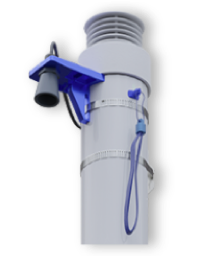 What's Afloat? Exploring MOSAiC Buoy Data
What's Afloat? Exploring MOSAiC Buoy Data
In October, researchers on the MOSAiC expedition deployed three SIMB buoys through the frigid Arctic sea ice. SIMB stands for Seasonal Ice Mass Balance, and the SIMB buoys will collect data like air pressure, air temperature, ice thickness, and more during the MOSAiC expedition. Like the Polarstern, the SIMB buoys will drift along with the sea ice.
Buoys in the ocean come in all different shapes, sizes, and kinds. Most float on top of or within the water and either drift with the currents or are anchored in one place. Different buoys are equipped with different kinds of instruments to measure different things.
How do you deploy a buoy in the Arctic?
One MOSAiC researcher filmed herself and her colleagues deploying a MOSAiC SIMB buoy in the sea ice so that you can see the entire process firsthand from start to finish! Video produced by Ph.D. student and MOSAiC School participant Ryleigh Moore.
MOSAiC Expedition: SIMB3 Buoy Installation Video by Ryleigh Moore from APECS Webinars on Vimeo.
 MOSAiC Monday - November 25, 2019
MOSAiC Monday - November 25, 2019
 #askmosaic: Downtime on an Arctic icebreaker
#askmosaic: Downtime on an Arctic icebreaker
Submitted question: Do you ever have a chance to relax (downtime) and if so, what is there to do?
Since the MOSAiC expedition began, many on board the Polarstern and Russian support icebreaker Fedorov have reported back on all aspects of life aboard a ship in the Arctic. Here is what a few of them had to say about downtime and non-work activities:
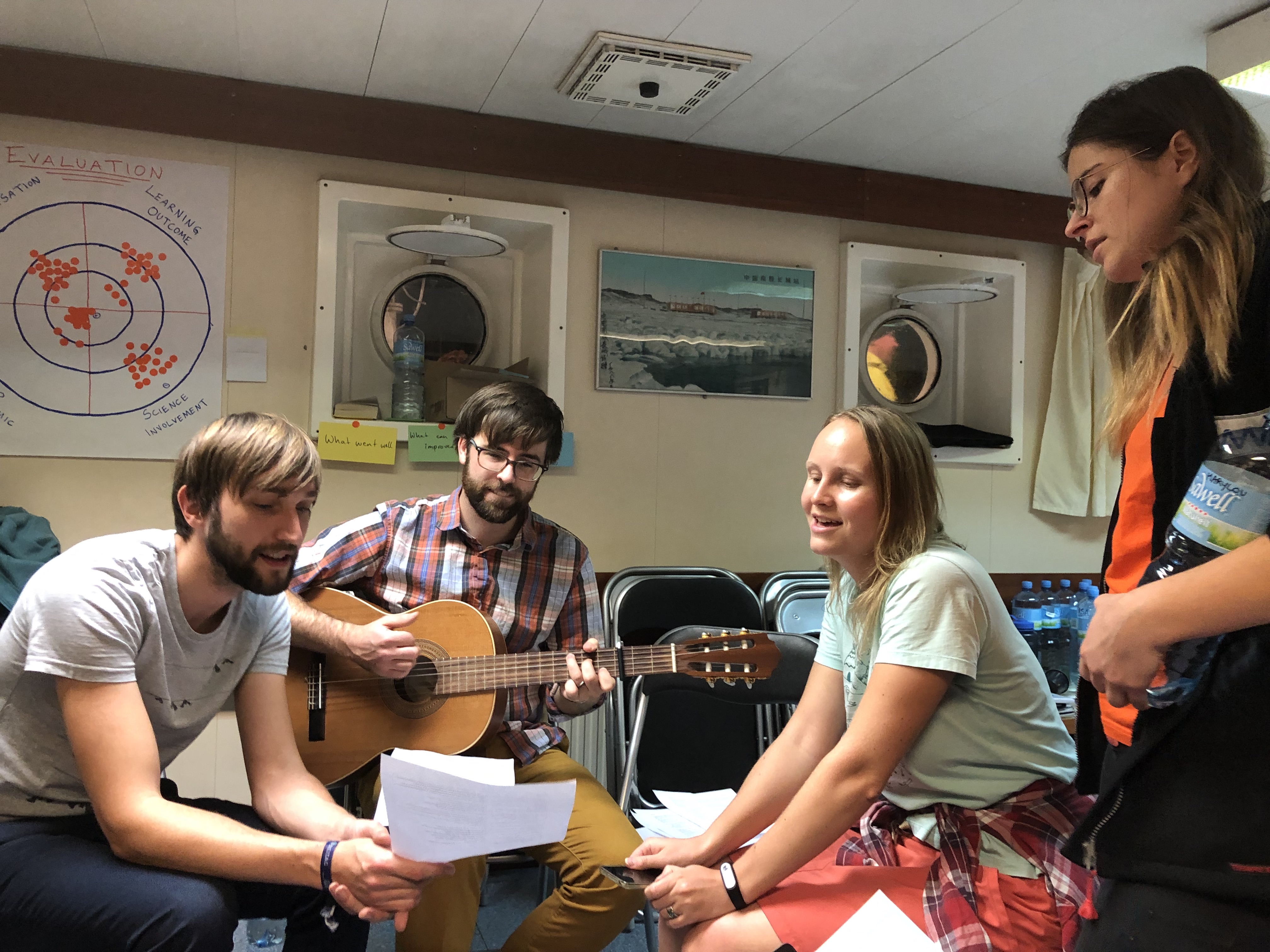
"... today was exceedingly pleasant outside because there was basically no wind. This made for easy work and an overall lighter mood. This mood was then accentuated by our mid-cruise BBQ. The Polarstern’s “wet lab” was transformed with a set of tables, decorations, and flags from the MOSAiC nations. So many options for the grill…. Just grab and grill your own. I doubled up on the salmon. What a treat to have BBQ-ed salmon over hot coals. Yum. Music, laughter, dancing. It was a nice way to take a load off and recognize the huge amount of work we have done so far to get MOSAIC up and running." -Dr. Matt Shupe, research scientist at the University of Colorado Boulder and expedition co-coordinator
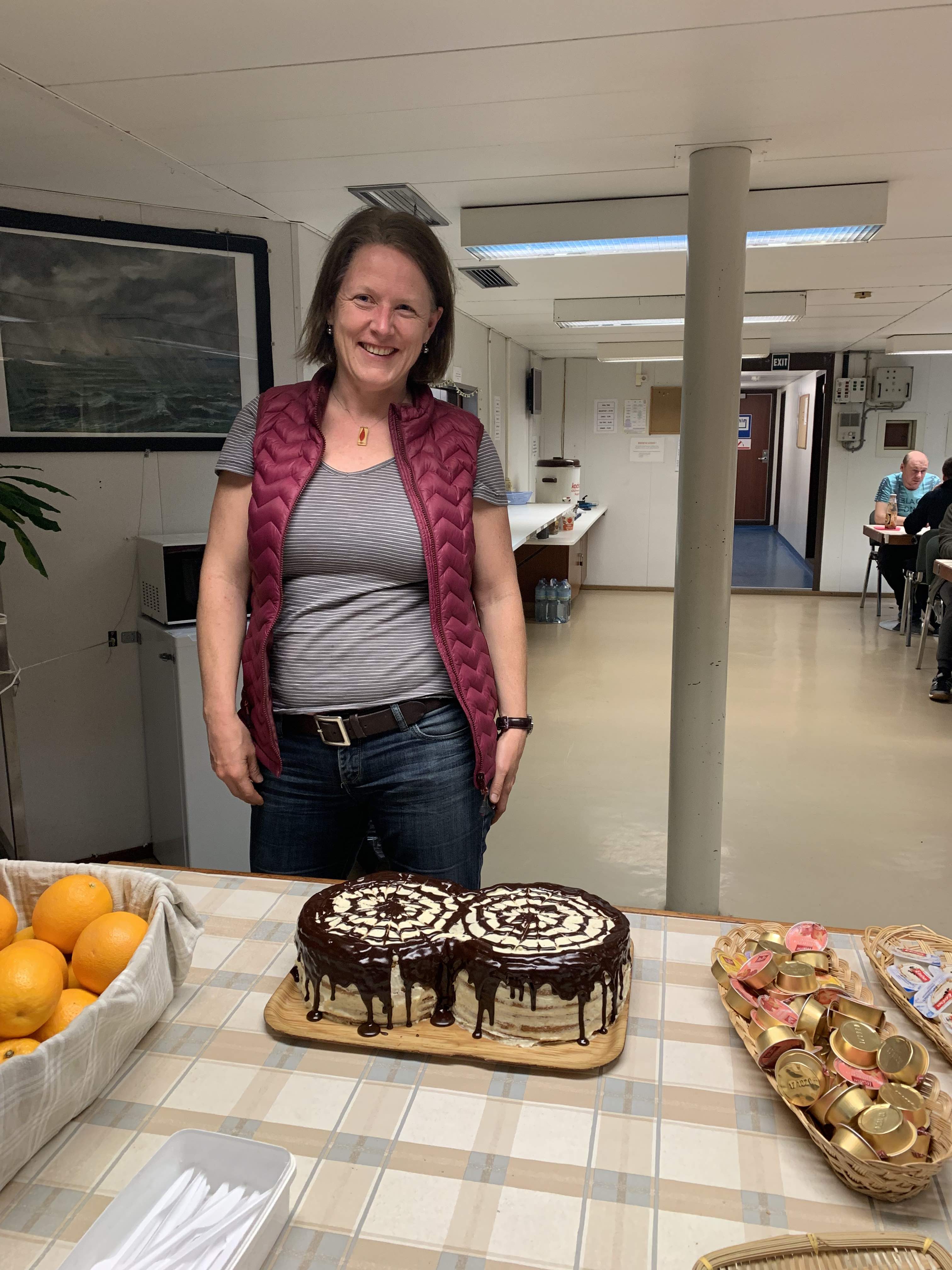
"...life at sea is not all work. We have had many exciting activities thus far, including the helicopter transfer of scientists from the Polarstern to [the Fedorov] for planning meetings and lectures for the students on board, several polar bear sightings, time in the sauna, birthday celebrations, addictive evening card games, and bioluminescence." - Dr. Jessie Creamean, research scientist at Colorado State University
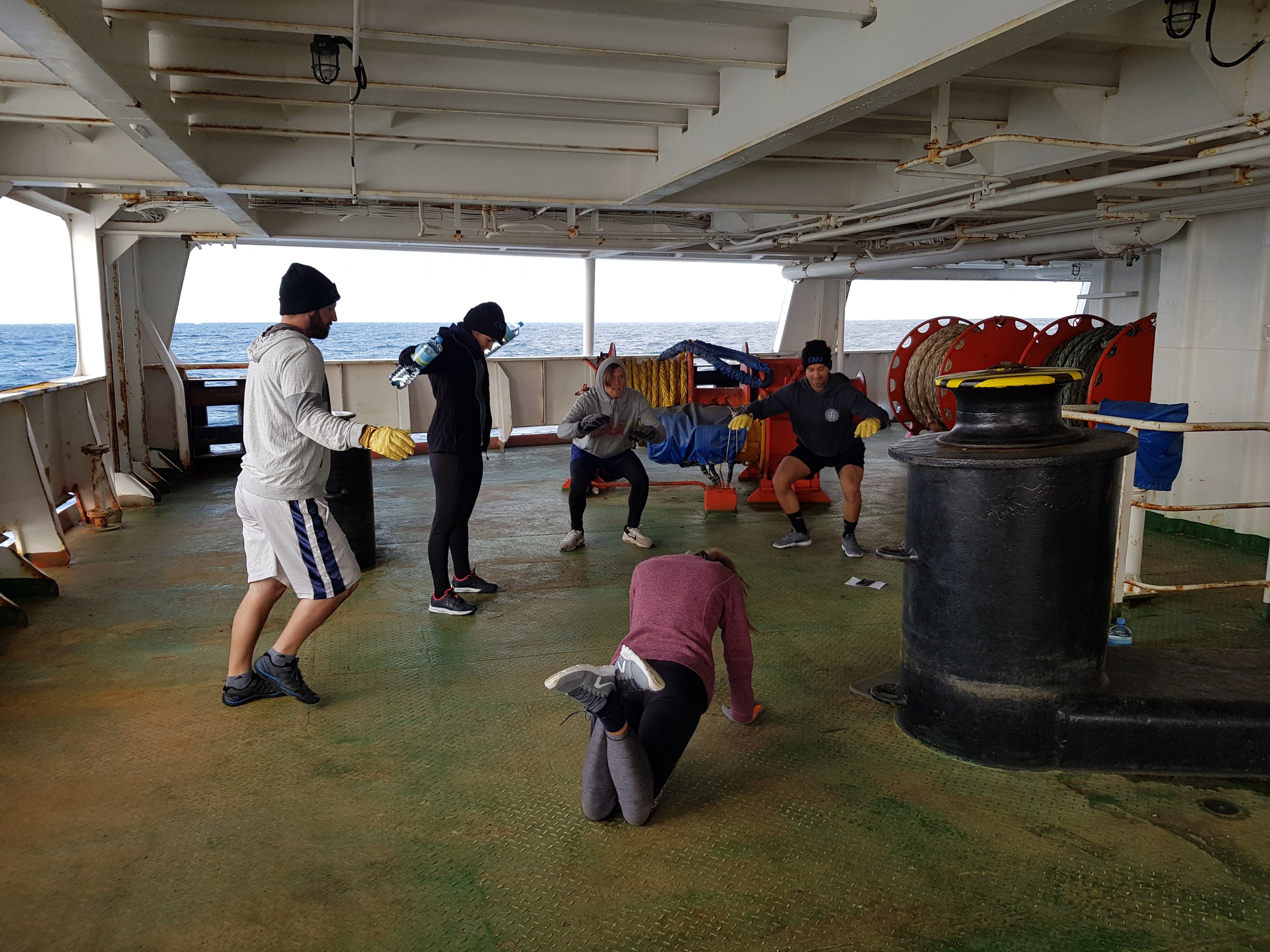
"To stay healthy and keep fit, we’ve instituted cross-fit work outs on deck, yoga classes in our classroom, and even some self-defense classes...Evenings have been our time to socialize, consisting of many game nights, [and] a couple movie nights..." -2019 MOSAiC School participants
Read the MOSAiC School participants' blog
Photos: (top) MOSAiC School chorus, photo credit Katharina Weiss-Tuider; (middle) Anne Gold, director of MOSAiC outreach at CU Boulder, celebrates her birthday aboard the Fedorov, photo credit Anne Gold; (bottom) Crossfit on deck the Fedorov, photo credit Julika Zinke
Send us your questions!
MOSAiC Monday 2020: What's Coming in the New Year?
In the New Year, we'll dive into the science of MOSAiC. What exactly are the scientists aboard the Polarstern studying? What kinds of data are they collecting and why? How does the climate in the Arctic impact the climate where you live? Get ready to learn more about topics related to:
-
Earth's energy budget
-
Atmospheric processes
-
Oceans
-
Biogeochemistry and ecosystems
-
Sea ice
-
Climate modeling
And more!
Is there something you'd like to see in a future MOSAiC Monday?
Send us your feedback and suggestions!
Image credit: AWI
 MOSAiC Weekly Tracking
MOSAiC Weekly Tracking
Plot the Polarstern
Each week we will provide you with the latitude and longitude coordinates of the Polarstern so that your students can track its journey across the Arctic in your classroom.
Download the map to plot coordinates
Download a larger map of the Arctic for a bigger picture view of the expedition area
Location of the Polarstern
| Date | Latitude | Longitude |
| September 16, 2019 | 69.68 N | 18.99 E |
| September 23, 2019 | 72.31 N | 26.93 E |
| September 30, 2019 | 85.12 N | 138.05 E |
| October 4, 2019** | 85.08 N | 134.43 E |
| October 7, 2019 | 85.10 N | 133.82 E |
| October 14, 2019 | 84.85 N | 135.03 E |
| October 21, 2019 | 84.97 N | 132.73 E |
| October 28, 2019 | 85.47 N | 127.07 E |
| November 4, 2019 | 85.88 N | 121.70 E |
| November 11, 2019 | 85.82 N | 116.00 E |
| November 18, 2019 | 86.05 N | 122.43 E |
| November 25, 2019 | 85.85 N | 121.35 E |
| December 2, 2019 | 85.97 N | 112.95 E |
| December 9, 2019 | 86.25 N | 121.40 E |
| December 16, 2019 | 86.62 N | 118.12 E |
| December 23, 2019 | 86.63 N | 113.20 E |
| December 30, 2019 | 86.58 N | 117.13 E |
**Day when MOSAiC reached the ice floe that the Polarstern will become frozen in and drift with for the next year.
Log MOSAiC Data
Download a MOSAiC Data Logbook to keep track of Arctic conditions over the course of the expedition
**The Data Logbook has been updated for 2020!
| Date | Length of day (hrs) | Air temperature (deg C) at location of Polarstern | Arctic Sea Ice Extent (million km2) |
| September 16, 2019 | 13.25 | High: 10 Low: 4.4 | 3.9 |
| September 23, 2019 | 12.35 | High: 6 Low: -1 | 4.1 |
| September 30, 2019 | 9.1 | -4.7 | 4.4 |
| October 4, 2019** | 6.27 | -13.0 | 4.5 |
| October 7, 2019 | 3.05 | -8.2 | 4.6 |
| October 14, 2019 | 0 | -14.7 | 4.8 |
| October 21, 2019 | 0 | -12.8 | 5.4 |
| October 28, 2019 | 0 | -18.3 | 6.8 |
| November 4, 2019 | 0 | -18.9 | 8.0 |
| November 11, 2019 | 0 | -25.5 | 8.7 |
| November 18, 2019 | 0 | -10.7 | 9.3 |
| November 25, 2019 | 0 | -18.4 | 10.0 |
| December 2, 2019 | 0 | -26.6 | 10.4 |
| December 9, 2019 | 0 | -23.1 | 11.2 |
| December 16, 2019 | 0 | -19.2 | 11.8 |
| December 23, 2019 | 0 | -26.9 | 12.2 |
| December 30, 2019 | 0 | -26.4 | 12.6 |
*Note: We expect data to fall within the following ranges: Length of day, 0-24 hours; Temperature, -40 to 14 degrees C; Sea ice extent, 3-15 million km2
**Day when MOSAiC reached the ice floe that the Polarstern will become frozen in and drift with for the next year.

